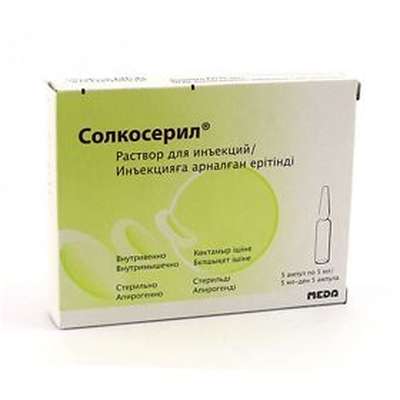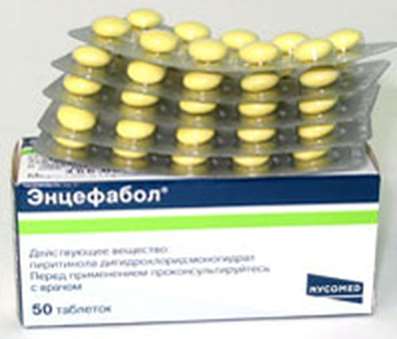Types and properties of Attention
07 Nov 2016
Psychologist Dr. Doping speaks about approaches to the determination of the attention, a state of flux and the measurement of psychological attention.
Why the focus - one of the most elusive of cognitive processes? What kind of attention can be distinguished by the degree of human activity? What distinguished the properties of attention as a process and as a state?
Attention (Focus) is one of the most elusive of human cognitive processes. Why is that? Because the focus, firstly, never exists as a separate process - it is built or in the process of perception, when we are better than anything manage to see or something to notice, but something did not notice, it is built into the process of thinking when we concentrate on a specific task, being distracted from everything that prevents us to solve it, and it therefore does not have its own product.
The product of focus is a more effective solution to the problem or a clear and accurate image of the perception of the object, which we looked at. Therefore, when the psychology of trying to determine the focus, its attempt to determine, firstly, through the effects that it has on other cognitive processes, and, secondly, to allocate some criteria that somehow allow it to distinguish.
The first thing we see - is what allows us to always focus on something to focus, and of something to distract. Attention is always selective, it always selects something from the set of surrounding influences or from a variety of our own thoughts. Therefore, we can define some attention as the selection information, but not only. Because, as soon as the information has been selected, chosen for further processing, we need to continue to keep it, we need to somehow concentrate on it. Therefore, we can define the note as a set of functions and selection processes of concentration, or as defined domestic researcher Nikolai Dobrynin, "the direction and focus of our mental activity."
To improve your mental activity you can with nootropics – Cogitum, Nootropil, Semax, Picamilon.
But apart from the fact that the attention of elusive, it is also quite diverse. That is the circle of the phenomena that we call the phenomena of attention, starting from the turn of the head towards the fallen chairs and ending with a focus on solving the problem of thinking is very wide, although any person both way or another treat attention.
What to do? Apparently, just there are different kinds of attention. On the one hand, for example, we can distinguish the attention by the material from which it is directed. We can talk about the sensual attention when it is sent to the outside world: visual, auditory, tactile. On the other hand, we can speak of intellectual attention, when it is directed at our own thoughts, inner images, feelings, and so on.
This is one option allocation kinds of attention. Still we can try to distinguish them according to the degree of human activity, which is something directs attention or draw. Our attention can be directed or in accordance with our own objectives, or in accordance with the properties of effects, or according to some combination of both. Accordingly, if the target note we do not, we'll talk about the involuntary attention, and if this goal is, then we'll talk about voluntary attention.
If we look at the involuntary attention, we will see that it is not uniform. The same Dobrynin allocated as many as three species. The simplest - the forced attention is directed to the bright, loud, different from each other, the environment objects.
One of the classics of psychology Edward Titchener called three stimulus, attracting the attention of a forced default: loud, yellow, the smell of musk.
Why so - I do not know, but they have since wander from one tutorial to another.
A little more to the person we see in the attention that is called involuntary. Involuntarily, we draw attention to something that meets our needs. We would like to now there is - unwittingly notice grocery stall where in either case, it would not have noticed.
And finally, still involuntary, but relying even more on what's going on in our heads, - the usual attention. For example, a physician familiar notices symptoms of human diseases where other people do not notice them, nerd usual notices in the forest flowers, lumberjack - tree trunks.
But all this is, in fact, without a goal to pay attention. Once we have this goal, we are talking about an arbitrary attention. It can actually be arbitrary, for example, when we are do not want to be distracted from the book, carefully read the text, remember. It can be strong-willed, when this area of attention is something interferes - for example, my friends have to walk in the street name, but we continue to hold the attention of the direction, to resolve this conflict. It can be expectant when the attention is not an object at all - for example, a scout sitting and waiting for someone to appear, and may not appear.
Interestingly, the release is still a third kind of attention, in addition to voluntary and involuntary, which is called after-voluntary attention. It is interesting because we pay it on what we need, but the effort associated with any attention to the need for something to keep in focus, no longer experience. For example, we read, read boring philosophical treatise and suddenly drawn into and it becomes not so boring for us and forget about everything.
Such mechanisms for involvement perceive computer games. Man falls as if in a state of flux. The task is still not too simple, but the funds already disbursed, to hold the attention of arbitrary, and it turns out that the man is in the stream of activity, but is active in this thread. Accordingly, we find an involuntary, arbitrary and posleproizvolnoe attention.
And what can we say about the properties of attention? The first thing we can say - this is what we can discern the properties of attention at any given time - the properties of attention as a state, as well as derivatives of these properties of attention as a process unfolding over time.
If we look at the attention of both the state, then we can see that it has the property of direction, that is, it is always something directed, it has a certain amount, ie the amount of an element of experience that we can hold in focus at the same time . For example, how much information we can grab, if she appeared too briefly? Or how many objects we can monitor, if we need to watch for multiple? For example, with a few children on the playground, among many other children.
And finally, the third property of attention at any given time - it is his degree, that is, how much we are currently focused on a particular impact on a particular impression. How to measure the degree of attention? The best way that psychologists have come up with so far - is to try to distract the person from what he was doing, the influence of a certain strength, but we need, accordingly, the line for these actions. Therefore, psychologists often use objective neuro-physiological methods. For example, it turned out that the indicator of the degree of attention can be a change in the pupil diameter during the observation of those or other effects or in the course of solving a particular problem when it comes to intellectual tasks. Now it is even used in professional diagnostics.
And in order to measure the amount of attention we can show very briefly a number of unrelated elements, or cause a person to keep track of multiple objects.
It appears that the scope of our attention on the fact terribly limited, is three or four elements.
If very much practice, you can hold on to six, but it's not possible to everyone.
And what will happen if we see what happens with these properties in time? For example, what can we say about the direction of change? It can be changed more easily or less easily? That is our focus may be more or less easy to switch - thus we get switching properties, that is, ease redirection from one object to another, or from one activity to another.
Reswitching problem - it is a very important application problem because, firstly, it is a very important quality demanded by professional, for example, the secretary, which also responds to emails and phone calls. On the other hand, there may be up correcting the problem, because switching of disorders are, for example, for children's distraction, for attention deficit hyperactivity disorder when reswitching is too high, uncontrolled attention jumps from one object to another. When senile distraction opposite occurs: switching of attention is sharply reduced.
Two other properties - property of the degree of attention and scope - can also be considered in the dynamics. What happens over time with a degree of attention? It can be held, or it may be reduced to recover and, for example, again.
They talk about sustainability focus property. Stability - is, in fact, the ability to save a certain degree of attention with respect to this impact over time. Accordingly, attention span, we can also measure using a monotonous job, causing, for example, cross out a certain person letters in long sheets of paper, looking at how often he was wrong and where it all begins to make mistakes.
And finally, what can we say about the amount of attention? We can say that this volume we may try to distribute between different activities. In attention there is the property of dispensability. One person more or less effectively divides his attention between several activities, it is given to another person worse. Accordingly, we also is diagnosed using combination of tasks.
That is, we get at least three primary properties of attention: focus, extent and volume - plus sometimes referred to as the concentration ratio between the degree and scope, that is, the degree of attention with respect to the unit volume of attention. Accordingly, if one element is equal to the degree of concentration.
And we're talking about at least three secondary or derivative, properties of attention - it's his pereklyuchaemost is its stability, is its dispensability. It is these properties of secondary attention, describing it as a process, most frequently employed in the diagnosis of psychological, especially in the diagnosis of and professional school, which are designed for special tests and techniques.

 Cart
Cart





